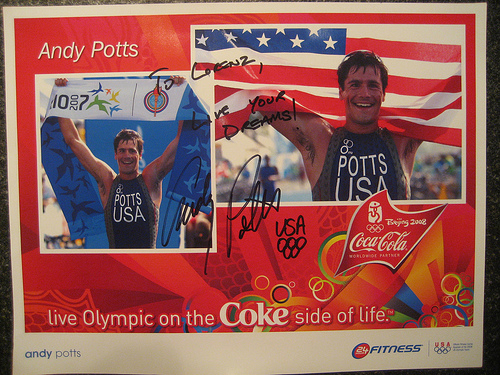“I can visualize how I want the perfect race to go. I can see the start, the strokes, the walls, the turns, the finish, the strategy, all of it. It’s so vivid that I can vividly see incredible detail, down even to the wake behind me.” – Michael Phelps, No Limits
I was really blown away by how intense Michael Phelps’ description of his visualization process is. This reminds me of a conversation I had about a year ago. Some famous olympic triathlete guy was signing autographs at a table outside my gym. Curious I go to the table and ask him about what makes him win. He gets metaphysical on me. Tells me about how he projects his victory on others with his mind. He beats them by out thinking them. It’s an animal instinct. When he’s won – long before the race is over – he knows it and so does his opponent.
At this point our eyes are locked and we’re completely immersed in this spiritual mind domination conversation. I start to tell him about this amazing piece I read in Popular Science. It’s about this crazy athlete who’s pushing the boundaries of physical performance and endurance with a revolutionary scientific approach. He looks at me funny and says, “Are you serious?” I think he’s talking about the training methodology, so I answer, “Yeah, this guy’s intense.” Again, “Are you serious?” Me: “Yes, it’s amazing.”
“My name is Andy Potts. I’m the guy in the article.”
He was the first person I ever asked for an autograph.




